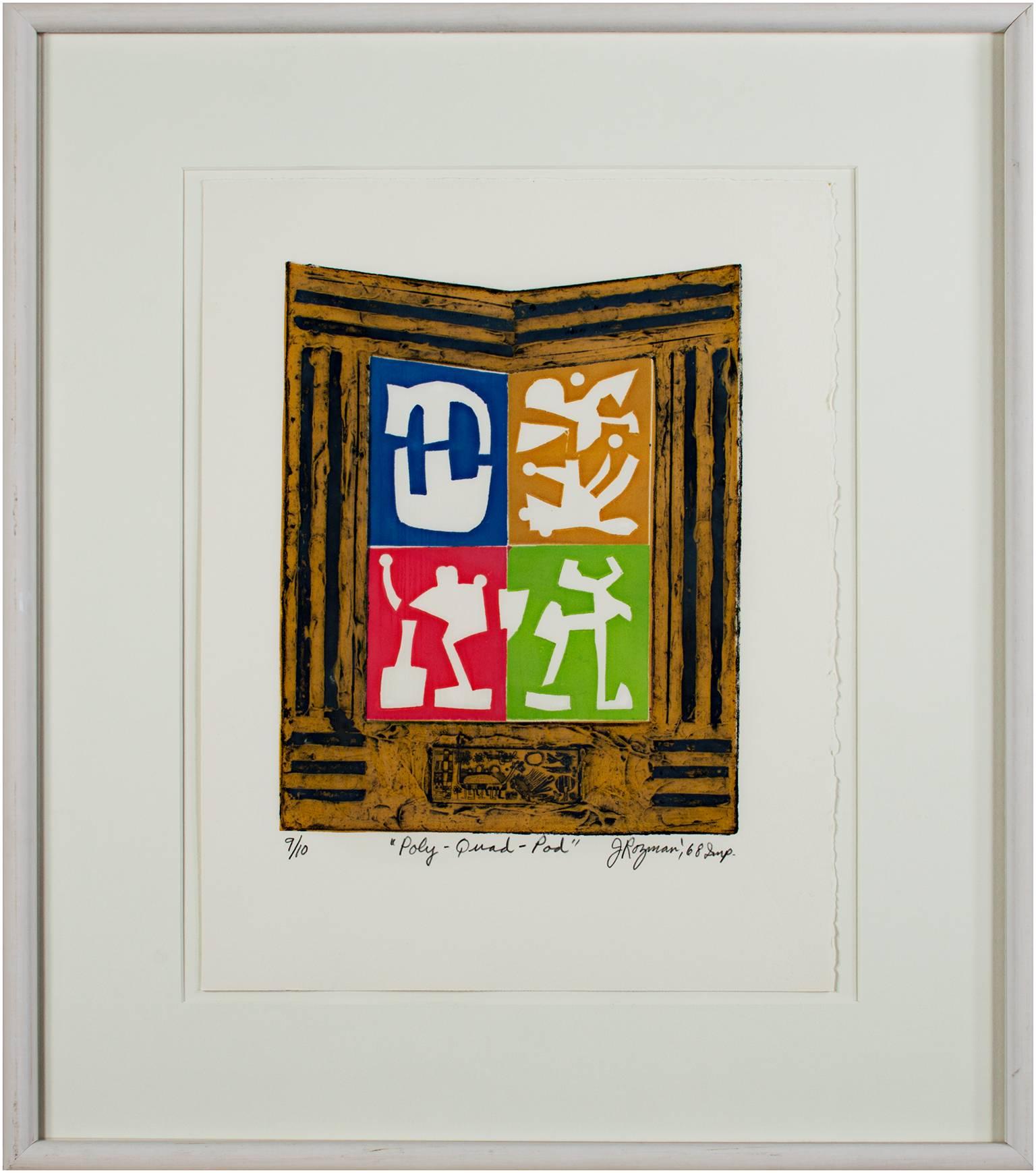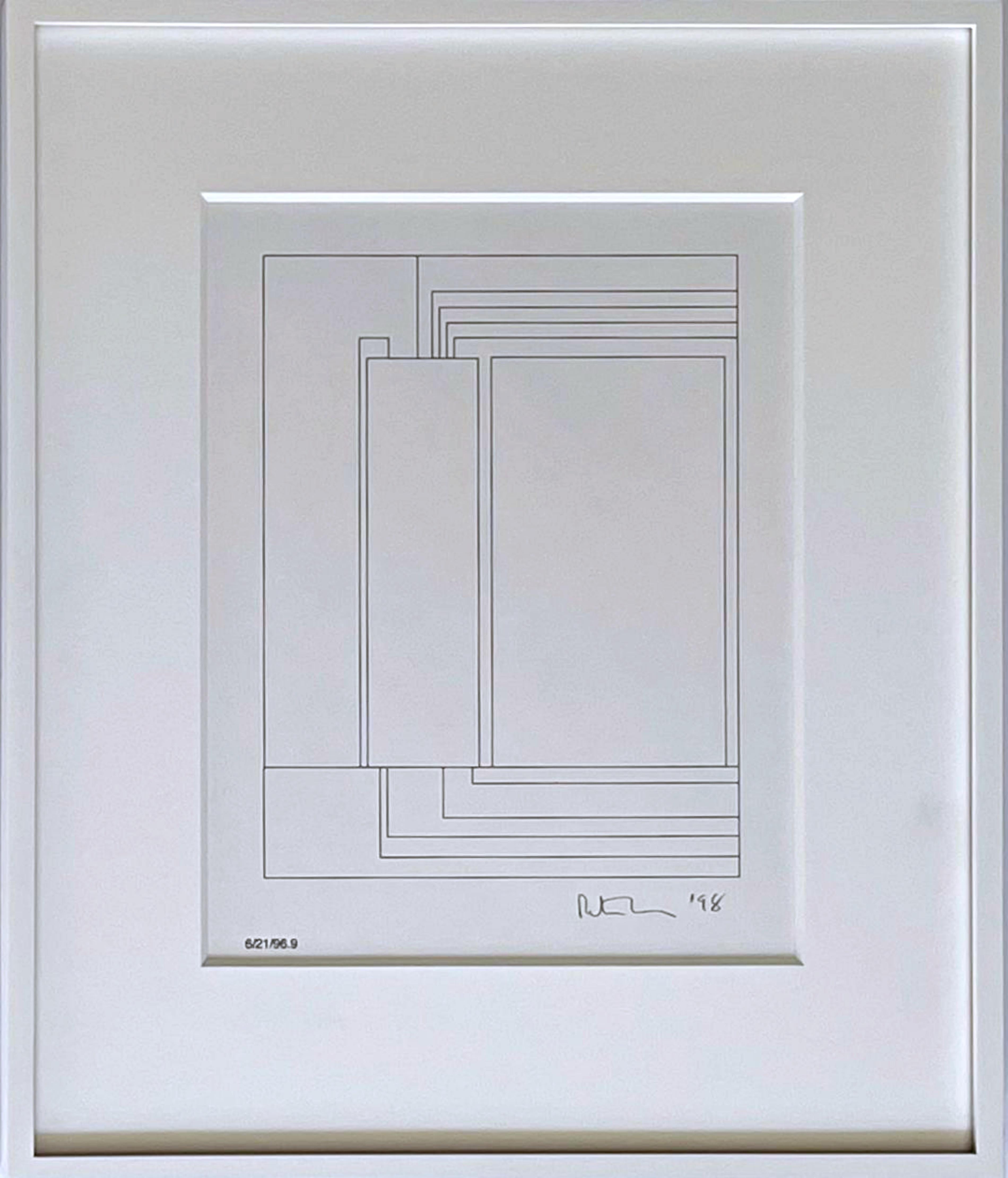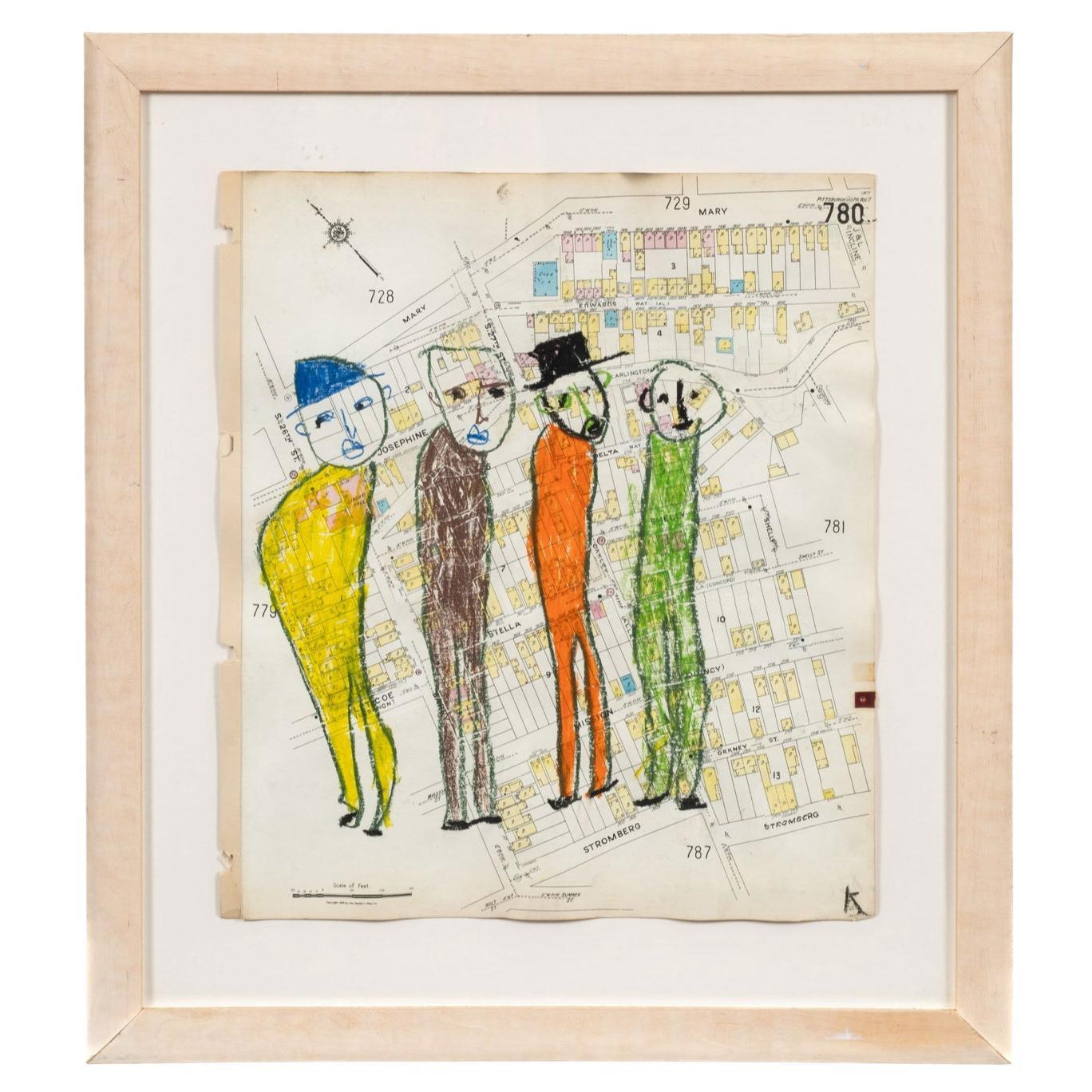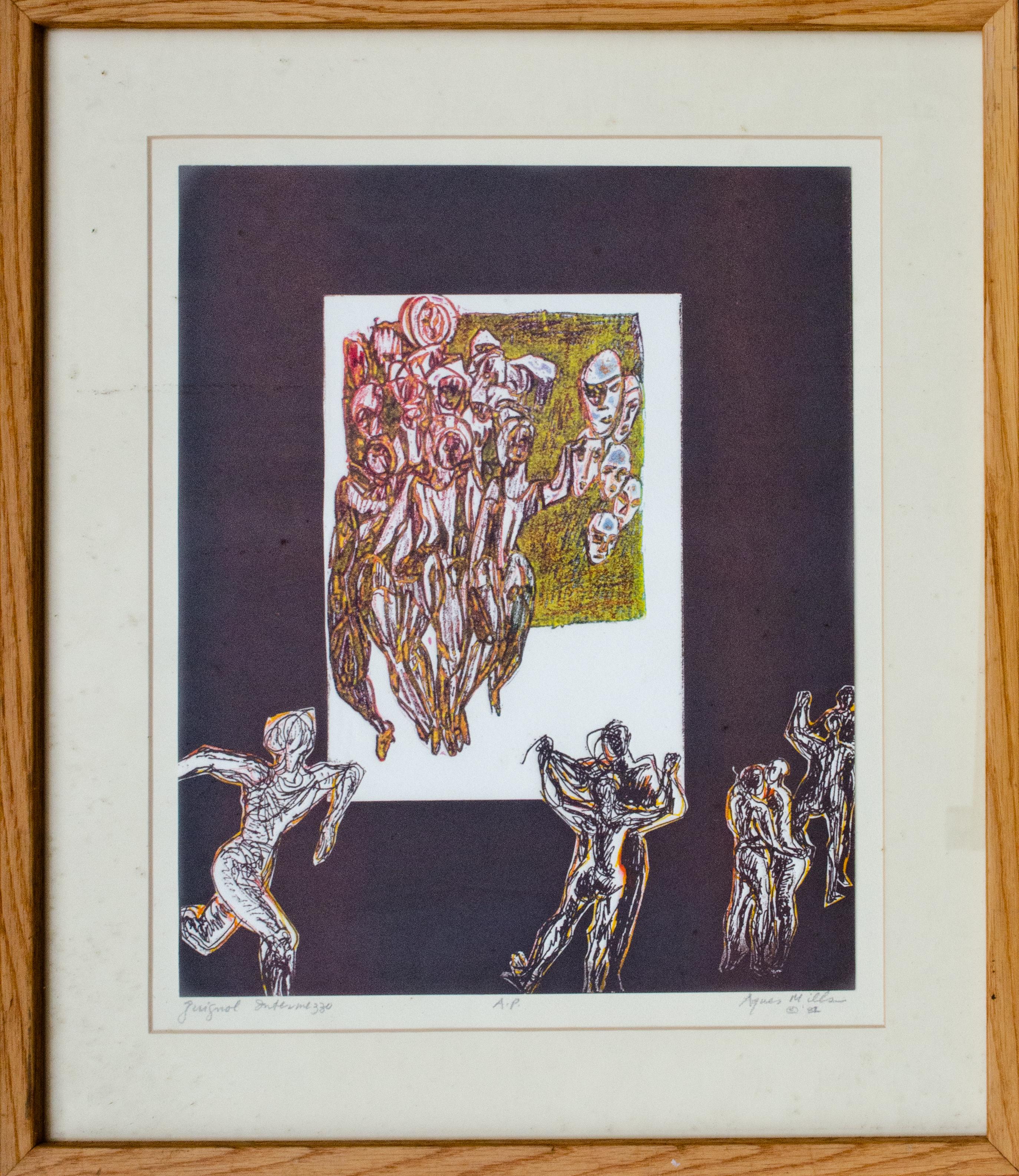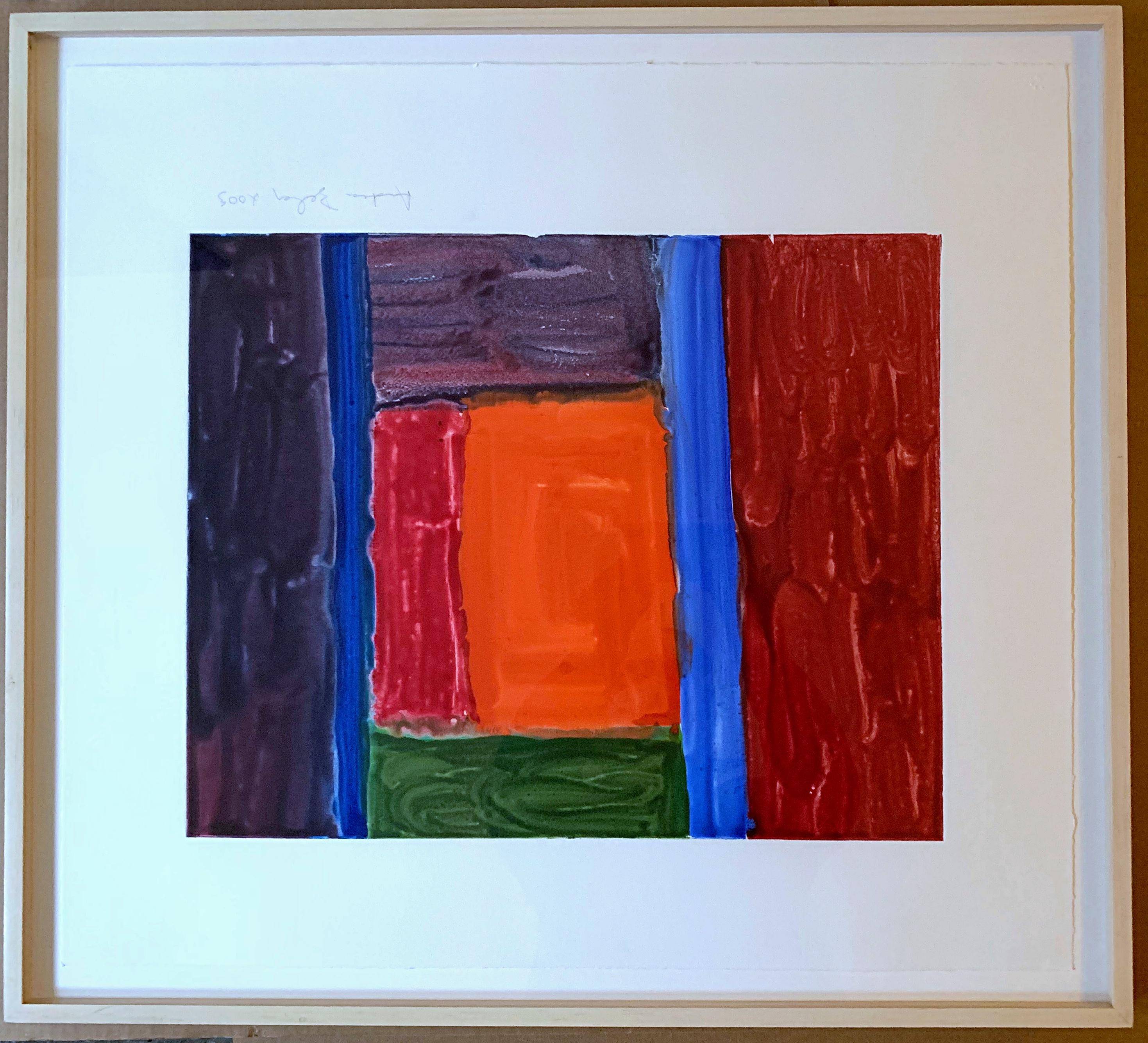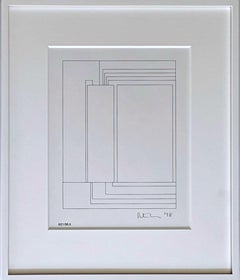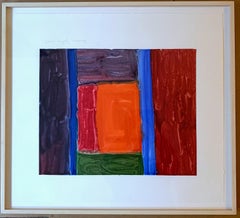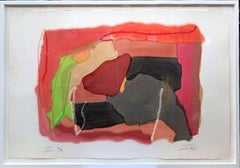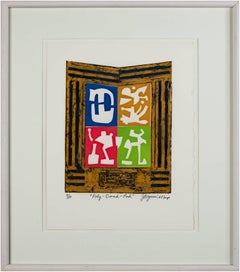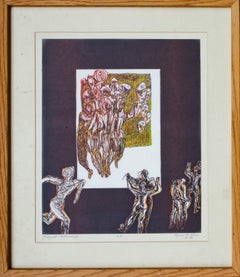Items Similar to Skelter Helter (unique signed pastel and woodcut) in artist's frame
Want more images or videos?
Request additional images or videos from the seller
1 of 7
Nils KarstenSkelter Helter (unique signed pastel and woodcut) in artist's frame2013
2013
$2,800
£2,179.99
€2,479.27
CA$4,027.72
A$4,425.16
CHF 2,312.62
MX$52,773.74
NOK 29,284
SEK 27,280.51
DKK 18,526.30
About the Item
NILS KARSTEN
Skelter Helter, (Ronald Reagan), 2013
Pastel and Woodcut on board in artist's frame
Hand signed on the lower right verso (back) of the board
Provenance: Dieu Donne Papermill
This unique work was donated by the artist to the 2013 art auction to raise funds for Dieu Donne Papermill, the prestigious art organization. The work itself measures 8.5 square inches, and it is held in a wooden frame measuring approx. 11 square inches.
More about Nils Karsten
Originally from Hamburg, Germany, Nils Karsten apprenticed as a cabinetmaker in Berlin before moving to New York in 1995. He received his BFA from the School of Visual Arts in 1999, participated in the Skowhegan program in 2002, and received his MFA from Vermont College of Fine Arts in 2003. Since then, he has been a faculty member at the School of Visual Arts in New York. His work has been shown in galleries and museums throughout the US, and internationally. He currently lives and works in Brooklyn, NY.
Karsten’s labor-intensive style is apparent across all of his output, from his painstakingly reproduced woodblock relief prints – measuring over 30 square feet – to his unsettling and detailed drawings and collages. Karsten probes memories of childhood and adolescence to combine iconic images from pop culture, early British and New York punk, revolution (Baader-Meinhof), war (Vietnam) and even alien invasion with surreal and fantastic utopian vistas. The artist approaches these themes in several distinct ways, each influenced by his proximate relationship with the music and social upheaval of the 1960s and 70s.
- Creator:Nils Karsten (1970, German)
- Creation Year:2013
- Dimensions:Height: 11 in (27.94 cm)Width: 11 in (27.94 cm)Depth: 0.4 in (1.02 cm)
- Medium:
- Movement & Style:
- Period:
- Condition:Held in original artist's frame.
- Gallery Location:New York, NY
- Reference Number:1stDibs: LU1745213674312
About the Seller
5.0
Platinum Seller
Premium sellers with a 4.7+ rating and 24-hour response times
Established in 2007
1stDibs seller since 2022
462 sales on 1stDibs
Typical response time: 2 hours
- ShippingRetrieving quote...Shipping from: New York, NY
- Return Policy
More From This Seller
View AllPeter Halley, Hand signed & dated original ink & graphite drawing; unique Framed
By Peter Halley
Located in New York, NY
PETER HALLEY
6/21/96.9, 1998
Graphite and ink drawing
Hand-signed by artist, signed and dated in graphite lower right front; lower left front bears title: 6/21/96.9
Frame included: elegantly matted and framed in a hand made museum frame with UV plexiglass
signed and dated in graphite lower right front; lower left front bears title: 6/21/96.9
This is a unique work
Frame included: elegantly floated and framed in a museum quality hand made white wood frame under UV plexiglass
Measurements:
Framed
16.5 inches vertical by 13 inches horizontal by 1.5 inches
Artwork (visible)
10 inches vertical by 8 inches horizontal
Peter Halley Biography
Peter Halley was born in 1953 in New York. He began his formal training at Phillips Academy in Andover, Massachusetts, from which he graduated in 1971. During that time, Halley read Josef Albers’s Interaction of Color (1981), which would influence him throughout his career. From 1973 to 1974 Halley lived in New Orleans, where he absorbed the vibrant cultural influences of the city, began using commercial materials in his art, and first became acquainted with the writings of earthwork artist Robert Smithson. In 1975 the artist graduated from Yale University, New Haven, with a degree in art history. After Yale, Halley returned to New Orleans, where he received an MFA in painting from the University of New Orleans in 1978. He had his first solo exhibition at the Contemporary Art Center, New Orleans, that same year.
In 1978 Halley spent a semester teaching art at the University of Louisiana, Lafayette. He has continued to teach throughout his career. In 1980, Halley moved back to New York and had his first solo exhibition in the city at PS122 Gallery. At this time, Halley was drawn to the pop themes and social issues addressed in New Wave music. Inspired by New York’s intense urban environment, Halley set out to use the language of geometric abstraction to describe the actual geometricized space around him. He also began his iconic use of fluorescent Day-Glo paint.
In 1984, Halley started to exhibit with the International With Monument gallery, becoming closely associated with the organization and its artists, who exhibited conceptually rigorous work in a market-savvy, coolly presented space that stood in stark contrast to the bohemian, Neo-Expressionist flair of the East Village art scene at the time. In 1986, an exhibition of four artists from International With Monument at the Sonnabend Gallery in New York heralded the group’s growing success. By the late 1980s, Halley was exhibiting with prominent galleries in the United States and Europe. In 1989, an exhibition of his paintings traveled to the Museum Haus Esters, Krefeld, Germany; Maison de la culture et de la communication de Saint-Étienne, France; and Institute of Contemporary Arts, London. From 1991 to 1992, a retrospective toured Europe, with presentations at the CAPC Musée d’art contemporain de Bordeaux, France; Musée d’art contemporain, Lausanne, Switzerland; Museo nacional centro de arte Reina Sofía, Madrid; and Stedelijk Museum, Amsterdam. In 1992, the Des Moines Art Center hosted his first solo exhibition at a U.S. museum.
While developing his visual language, Halley became interested in French post-structuralist writers, including Jean Baudrillard, Guy Debord, Michel Foucault, and Paul Virillio, all of whom shared his concern with the character of social spaces in a post-industrial society. In 1981, he published his first essay “Beat, Minimalism, New Wave, and Robert Smithson” in Arts, a New York–based magazine that would publish eight of his essays before the decade’s end. Halley’s writings became the basis for Neo-Geometric Conceptualism (also known as Neo-Geo), the offshoot of Neo-Conceptualism associated with the work of Ashley Bickerton, Halley, and Jeff Koons. In 1988, the artist’s writings were anthologized in Collected Essays, 1981–1987, and again in 1997 in a second anthology, Recent Essays, 1990–1996.
In the mid-1990s, Halley began to produce site-specific installations for museums, galleries, and public spaces. These characteristically brought together a range of imagery and mediums, including paintings, wall-size flowcharts, and digitally generated wallpaper prints. Halley has executed permanent installations at the Dallas/Fort Worth International Airport, Texas, and the Gallatin School of Individualized Study at New York University. In 2011, his installation of digital prints Judgment Day...
Category
1990s Abstract Geometric Abstract Drawings and Watercolors
Materials
Ink, Graphite
Untitled, from the Lehman Brothers Art Collection unique signed framed monotype
By Andrea Belag
Located in New York, NY
Andrea Belag
Untitled, from the Lehman Brothers Art Collection, 2003
Watercolor monotype on paper
Pencil signed and dated on the front
Framed
Gorgeous ...
Category
Early 2000s Abstract Abstract Drawings and Watercolors
Materials
Watercolor, Monotype, Graphite
Dexter's Choice State II, signed mixed media watercolor (unique variant), Framed
By Larry Zox
Located in New York, NY
Larry Zox
Dexter's Choice, State II, ca. 1990
Mixed media, Watercolor pochoir, and Oil stick Wax, Water-Based Crayons, on heavy Arches museum watercolor rag paper with deckled edges
...
Category
1990s Color-Field Abstract Drawings and Watercolors
Materials
Crayon, Mixed Media, Oil, Watercolor, Graphite, Monoprint
$6,000 Sale Price
40% Off
Flag Icon unique signed pastel collage on paper by renowned female artist Framed
By Sonia Gechtoff
Located in New York, NY
Sonia Gechtoff
Flag Icon, 1963
Pastel, graphite and collage
Frame included: elegantly framed in hand made wood frame with UV plexiglass
Evocative mixed media mid century modern work...
Category
1960s Abstract Abstract Drawings and Watercolors
Materials
Pastel, Mixed Media, Graphite
Sweet Filthy Cheat (unique signed mixed media painting with artist studio label)
By Billy Al Bengston
Located in New York, NY
Billy Al Bengston
Sweet Filthy Cheat, 2004
Watercolor and acrylic on paper
Signed, dated and titled on the front
Frame included
Unique
This unique work, with it's charmingly sly tit...
Category
Early 2000s Pop Art Abstract Drawings and Watercolors
Materials
Mixed Media, Acrylic, Watercolor, Pencil
Table 2, Couple 1, unique signed framed abstract collage by beloved Texas artist
Located in New York, NY
Henry Rayburn
Table 2, Couple 1 (unique framed collage by beloved Texas artist), 1995
Acrylic and Mixed media collage on paper
Signed in graphite pencil on the front
Unique
Frame inc...
Category
1990s Abstract Mixed Media
Materials
Mixed Media, Laid Paper, Acrylic
You May Also Like
"Poly-Quad-Pod, " Original Color Collagraph signed by Joseph Rozman
By Joseph Rozman
Located in Milwaukee, WI
"Poly-Quad-Pod" is an original color collagraph signed, titled, and numbered in the lower part of the print. This piece is edition 9/10 and is by the artist Joseph Rozman. It depicts...
Category
1960s Surrealist Abstract Prints
Materials
Color
Still Life, Abstract Expressionist Framed Woodcut by Judy Rifka
By Judy Rifka
Located in Long Island City, NY
Artist: Judy Rifka, American (1945 - )
Title: Still Life
Year: 1986
Medium: Woodcut, signed and numbered in pencil
Edition: 13/46
Image: 29 x 21 inches
Size: 37 x 28 in. (93.9...
Category
1980s Contemporary Still-life Prints
Materials
Woodcut
Mixed-Media Folk Art Pastel Artwork by Karl Mullen (Irish/American b. 1954)
By Karl Mullen
Located in Chicago, IL
Pastel or gouache on found paper map of Pittsburgh Pennsylvania depicting a grouping of four seemingly estranged characters. Wrapped in a wood frame and float mounted on art board un...
Category
1990s American Mid-Century Modern Paintings
Materials
Glass, Wood, Paint, Paper
$1,600 Sale Price
20% Off
Hand Colored Etching by WPA Artist Agnes Mills, 1982, Unique
Located in New York, NY
Agnes Mills (American, 1915-2008)
Guignol Intermezzo, 1982
Hand colored etching (UNIQUE)
Sight: 13 3/4 x 11 1/4 in.
Framed: 19 1/2 x 17 x 3/4 in.
Titled lower right
Inscribed "AP" bo...
Category
1980s American Modern Figurative Prints
Materials
Etching
Robert Kelly Kalasa V Signed Modern Abstract Aquatint Etching 5/50 Framed, 1985
By Robert Kelly
Located in Keego Harbor, MI
A bold and graphic modern aquatint etching in colors titled "Kalasa V" by Robert Kelly. Hand signed in pencil on the bottom right with an annotation of 5/50 on the bottom left. Published in 1985. Kelly's work intricately combines influences of the Bauhaus from Van Doesburg to Mondrian, with those of Schwitters and Klee, Kelly weds hints of the historical with the contemporary. His play of edges, angles, and cuts creates a tension and an intuitive logic to the placement of line and form. Kelly's work investigates the idea of doubleness through images that reflect, oppose, or mimic each other. Dimensions: 32"w x 1.5"d x 37"h (framed). In very good vintage condition.
Robert Kelly (1956- ) paintings have been acquired by public and private collections in Europe and the United States, including The Whitney Museum of American Art, The Brooklyn Museum, New Mexico Museum of Art, Milwaukee Art Museum, Smith College Art Museum, Jane Voorhees Zimmerli Art Museum, Montgomery Museum of Fine Arts, The Fogg Museum, The Margulies Collection, and the McNay Art Museum. Kelly has traveled throughout the United States, Europe, North Africa, the Near East, and Nepal. His work often incorporates unusual materials from his journeys, among them vintage posters and printed antique...
Category
Vintage 1980s Drawings
Materials
Paper
"Oesterreich II" Contemporary Monotype with Chine Colle and Watercolor
By Michael Pauker
Located in Soquel, CA
Contemporary abstract painting and collage composition with stamps, various types of paper, and watercolor by Michael Pauker (American, b. 1957). With found object scraps of vintage ...
Category
Early 2000s Contemporary Abstract Drawings and Watercolors
Materials
Paper, Watercolor, Found Objects
